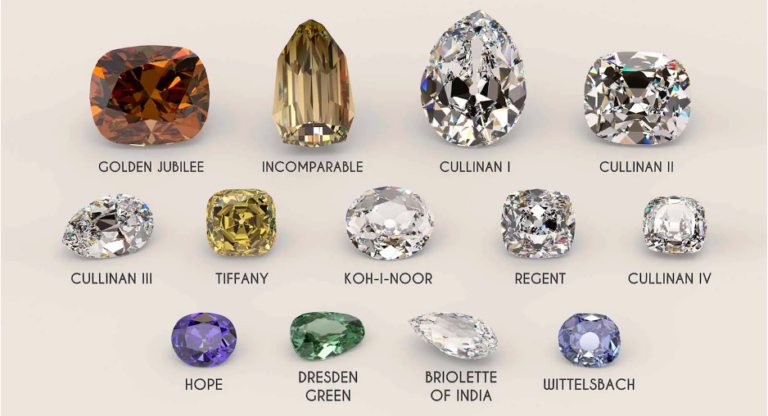
Diamonds, often perceived as flawless and perfect, are in reality products of nature with their own unique characteristics. One such feature is the inclusion – a natural imperfection within the diamond’s structure. These inclusions are not flaws in the traditional sense; rather, they are fascinating fingerprints of the diamond’s journey from the Earth’s depths to the surface.
Understanding Inclusions
Inclusions are formed during the diamond’s crystallization process, when impurities become trapped within the carbon structure. These imperfections can vary widely in size, shape, and appearance, ranging from tiny crystals to visible cracks. While some inclusions may affect a diamond’s clarity and brilliance, others are so subtle as to be invisible to the naked eye.
Common Types of Inclusions
- Crystals: These are the most common type of inclusion, often appearing as small, colourless or colored crystals within the diamond.
- Clouds: Clusters of tiny crystals that create a hazy or cloudy appearance.
- Feathers: Internal cracks within the diamond, resembling feathers in appearance.
- Twinning Wisps: Fine, needle-like inclusions resulting from the diamond’s growth process.
- Pinpoints: Tiny black or dark inclusions that are difficult to see without magnification.
- Grains: Areas of irregular or cloudy growth within the diamond.
- Cavities: Hollow spaces within the diamond.
- Indented Natural Inclusions: These are small indentations on the diamond’s surface, often caused by the removal of a crystal during polishing.
The Impact of Inclusions on Diamond Clarity and Value
The Gemological Institute of America (GIA) has developed a clarity scale to assess the impact of inclusions on a diamond’s appearance. The scale ranges from Flawless (FL) to Included (I3). While flawless diamonds are extremely rare and command premium prices, diamonds with minor inclusions often exhibit exceptional brilliance and can represent excellent value.
It’s crucial to remember that inclusions are a natural part of a diamond’s formation and do not necessarily diminish its beauty or durability. In fact, some rare and distinctive inclusions, such as those with unique shapes or colours, can enhance a diamond’s value among collectors who appreciate the natural history of these stones.
The Role of Inclusions in Diamond Grading
Diamond graders examine stones under magnification to assess the size, number, position, and visibility of inclusions. These factors, combined with other characteristics like cut, colour, and carat weight, determine the overall clarity grade.
The position of an inclusion can significantly affect its visibility. Inclusions located deep within the diamond or in areas less likely to be seen by the eye have a smaller impact on clarity. Conversely, inclusions near the surface or in the diamond’s crown can be more noticeable.
Understanding inclusions is essential for making informed decisions when purchasing a diamond. While clarity is an important factor, it’s equally important to consider the overall beauty and brilliance of the stone. A diamond with minor inclusions can still be stunning and offer exceptional value.
Inclusions as a Unique Identifier
Beyond their impact on clarity, inclusions can serve as a diamond’s unique fingerprint. Each diamond’s inclusion pattern is distinct, allowing gemologists to identify individual stones. This is particularly important in cases of lost or stolen diamonds.
By appreciating the natural history and characteristics of inclusions, consumers can develop a deeper connection to their diamonds and make choices based on personal preferences rather than solely on clarity grades.




